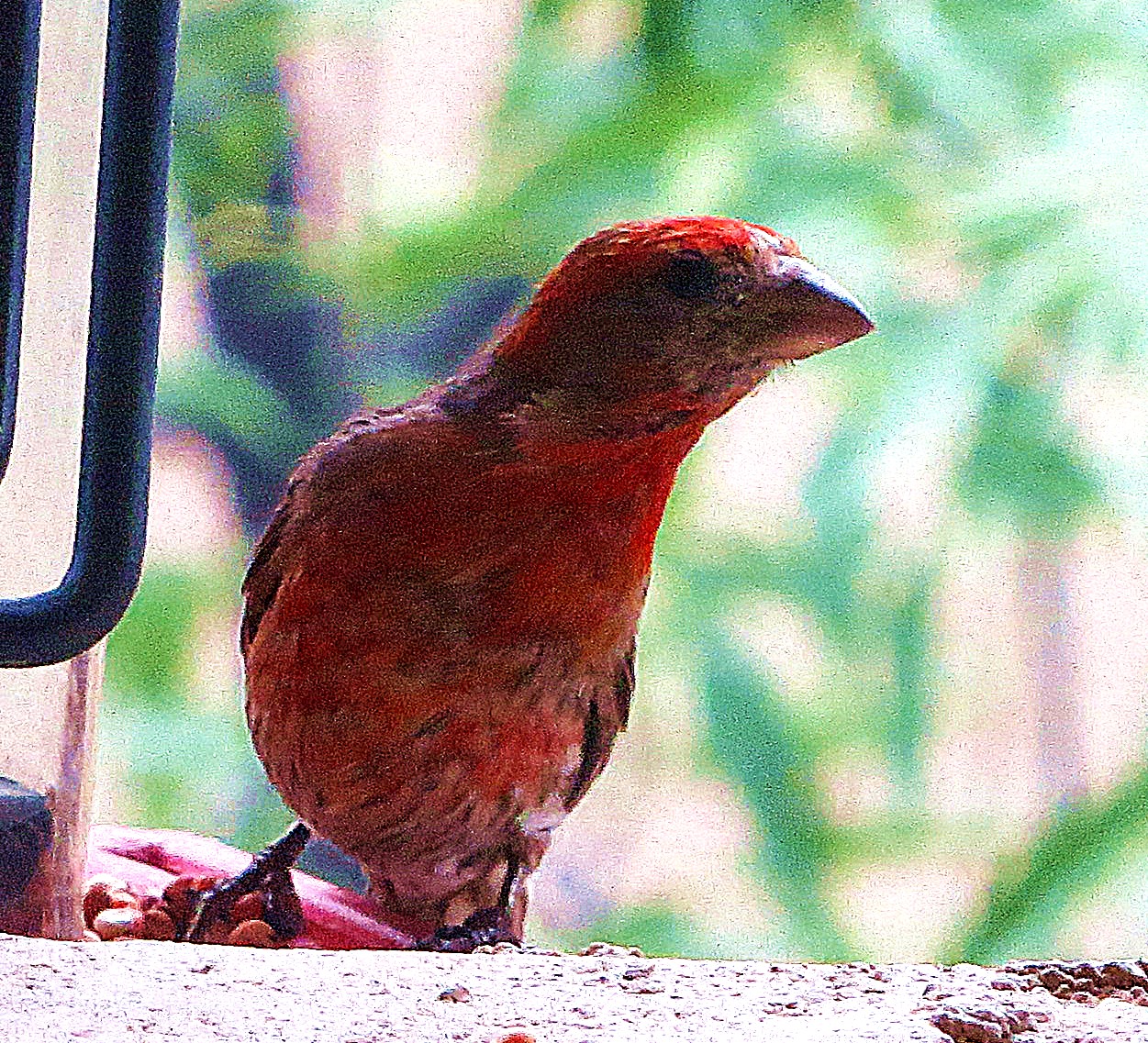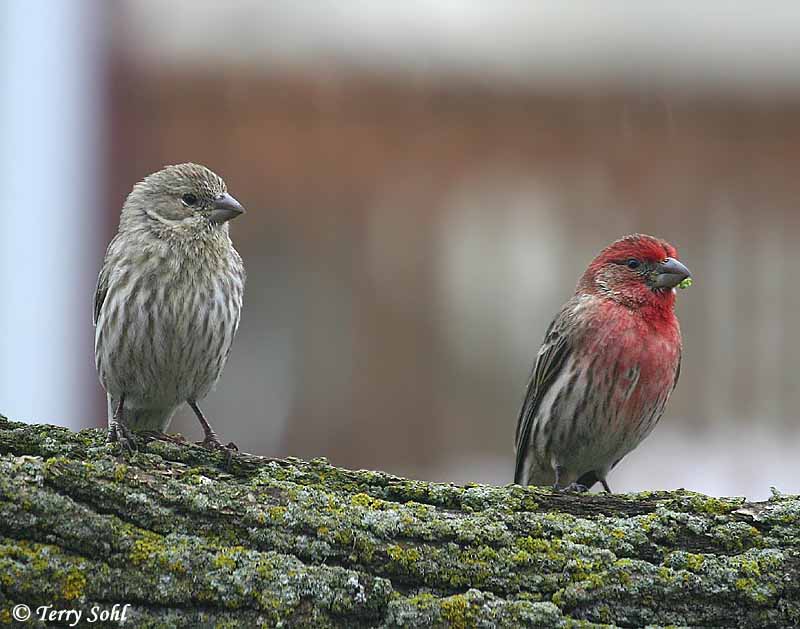Table Of Content

Females/immature males are brown overall with blurry streaks down the belly. “Seemingly similar birds can be really different from each other,” Trina says. “The house finch is a very social bird,” which nests in colonies or groups.
ID Challenge: House Finch or Purple Finch?
Finches in Canada or the eastern part of the United States around the Great Lakes region typically head south for the winter. Look for them in woodlands, parks, residential areas, farms, deserts across much of the United States year-round. 5.) Although House Finches are well adapted to dry climates, they still need a lot of water. On especially hot days, they can consume more than their own bodyweight in fluids. Luckily, succulent plants abound in their native, arid habitat, offering a hydrating food source.
Feeding
A western species until the 1940s, the house finch was introduced to the east by an unethical pet dealer, where they quickly spread to all eastern states. 10.) Their plant-based diets might suggest peace-loving passivity, but House Finches can be very aggressive, especially at feeders. In fact, they’re so territorial around food and nest sites that they’re one of the only birds known to fight off non-native House Sparrows. Where House Finch populations go up, House Sparrow numbers drop.
House Finch vs Purple Finch: How to Tell the Difference
Often numerous at feeders, especially where black oil sunflower is offered. Tends to sit at feeder and crack seeds in its stout bill instead of flying away. Female House Sparrows are warmer brown above and don't have streaked underparts like female/immature House Finches. This species in Texas is a permanent resident, so Possible and Probable records are also useful in defining the range of House Finch.
Nest Placement
Body and bill size, shape, wing length, tail length, and coloring can all vary regionally. For instance, on Guadalupe Island off the coast of Baja California, Mexico, the finches have heftier bills than those found on the mainland. And eastern finches have longer and pointier wings than their western counterparts.
Nesting Habits What the Nest Looks Like
The length depends primarily on the region and experience of the pair. As seed eaters, it's beneficial to have these birds around your yard. In summer they can be a real help in keeping weeds seeds down.
Identifying the male and female house from other Carpodacus finches requires care. Told from male Cassin’s finch by brown cap and eyebrow and curved bill. The male common rosefinch is more rose-pink overall and lacks distinct streaking on its belly. The female house has a very plain face, unlike the purple and Cassin’s, which both show distinct eyebrows. The female house tends to have browner underparts than the 2 as well, with blurry streaks below. The female common rosefinch looks similar, but she is drabber, with less distinct streaking below.
Washington Range Map
This pre-existing penchant for urban areas likely helped them thrive when they were introduced to new areas. The biggest House Finch flocks in the East are found in cities, and it’s much more common to find the eastern birds in habitats developed by people than anywhere else. If you haven’t seen one recently, chances are you can find one at the next bird feeder you come across.
We attached a man-made wooden Barn Swallow nest under the eave of our house and attract a pair every year. An interesting note is that pairs that stay together through winter, nest a little earlier than those that don't. The term "mate for life" is a bit of a stretch with House Finches, even though some pairs stay together through winter and breed again the following season. This difference in coloration is most likely because of the differences in regional diets. Many people think they are seeing a Red-headed Sparrow Bird. Fortunately for the birds and many of us, the House Finch adapted well and is now a common bird in almost every state.
House Finch In Ramona: Photo Of The Day - Patch.com
House Finch In Ramona: Photo Of The Day.
Posted: Thu, 01 Jun 2023 07:00:00 GMT [source]
Birding experts Kenn and Kimberly Kaufman write, “Telling a house finch vs a purple finch apart is a common backyard challenge over much of North America. On the males, one of the first things to look for is the pattern on the sides of the body, below the wings. House finch males have dark stripes there (as seen in your photo), while purple finches don’t. Adult males are rosy red around the face and upper breast, with a streaky brown back, belly, and tail. The ability of both sexes to attract mates in the first summer after hatching may have aided their rapid range expansion. Variation in the color of males is determined by their diets.
The song of the House Finch is a pleasant, warbling melody comprising of a series of varied notes. Once a crackdown on this illegal trade went into effect, shop owners were quick to release the birds into the wild. Range maps provided by Kaufman Field Guides, the official field guide of Birds & Blooms. Patuxent Wildlife Research Center, Bird Banding Laboratory 2020. Audubon protects birds and the places they need, today and tomorrow.

Male house finches are more orange and red with the color concentrated on their heads and chests. Flocks of House Finches are common at bird feeders during the non-breeding season. Some flocks may stay together through the breeding season as well, and birds will use bird feeders year round. They often forage on the ground, but also perch on weeds, shrubs, or trees. Both males and females may sing during the breeding season, and males sing year round. 3.) House Finches can look very different depending on where they live.
In one season, a female House Finch can raise six clutches of eggs, but in most cases, they only raise two per season. House Finches typically live off things like nuts, berries, and seeds. Some flocks of finches travel south to places like North Carolina, while others travel as far down as Mexico.
1.) Once limited to the Western United States and Mexico, House Finches are now found from coast to coast, and as far north as southern Canada. In 1939 a few of the birds, originally captured in Santa Barbara, California, were set free on New York’s Long Island by a pet store owner. By the early 1940s wild nests were beginning to show up on Long Island, and from there the spread continued. They’ve also been introduced and become widespread in Hawaii. In some places, House Finches are considered an invasive species. They will use ledges or vents on homes, barns, and outbuildings.
Breast and belly feathers may be streaked; the flanks usually are. In most cases, adult males' heads, necks and shoulders are reddish.[3][4] This color sometimes extends to the belly and down the back, between the wings. Adult females have brown upperparts and streaked underparts. Male and female house finches commonly return to the same breeding area each year. If they have previous nest sites, they are likely to reuse one of them. The house finch is commonly found throughout much of the Lower 48.
Before its expansion throughout the U.S., the house finch was native to the Southwest and was acclimated to an open, arid habitat. House finches nest in a wide variety of sites, reflective of their diverse range. Common nest locations include cacti, conifer trees, palm trees, rock ledges, roof overhangs, hanging planters, windowsills, and abandoned buildings. On rare occasions, finches will use the abandoned nest of another bird or build in a tree cavity. The female has a uniformly brown-streaked head with broad brown streaking on the breast and belly.

No comments:
Post a Comment